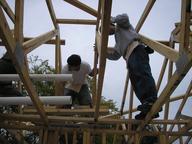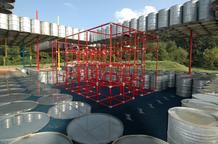BY LESA.LORUSSO ON MAY 1, 2012 IN COMMUNITY
How can the design of spaces positively affect its inhabitants? Does architectural design have a moral responsibility to better the lives of end users of interior and exterior spaces? Samuel Mockbee thought so, and I agree with him. I have been a fan of Auburn University’s Rural Studio for years. The brainchild of late Architect, social visionary and Auburn University professor Samuel Mockbee, the Rural Studio takes architecture students to Florida’s northern neighbors in rural Alabama to engage in projects ranging from churches, community centers to private homes with impoverished local residents. Mockbee began the Studio in the early 1990’s as a reaction against the architectural profession’s prevailing preoccupation with matters of style and instead sought to “challenge the status quo into making responsible environmental and social changes.” He believed that architectural education should expand its curriculum from “paper architecture” to the creation of real buildings and to sowing “a moral sense of service to the community.” (1)
Several educational programs within Brevard County, FL have aligned with Mockbee’s philosophy of architectural community service. Drafting students from Satellite High School and students from Brevard Community College’s Interior Design Technology program have contributed to the design and construction of homes for Brevard Habitat for Humanity, thus effectively moving away from “paper architecture” and onto the construction site. The experience is a highlight for students who gain hands on experience and emphasizes the social impact that design can have.
Lions Park Playscape is an excellent example of community focused architecture in action. It is the fifth phase of Rural Studio’s involvement in the 40-acre, Greensboro Park. Phase Five’s project scope is to design and build a playground, as well as to add a 1/2 mile of walking trail to the pre-exisitng 1/2 mile circuit. The Lion’s Park Playscape is made up of 55 gallon galvanized drums previously used to store all natural mint oil, were donated by a Washington based company. The drums were used to create a “play maze” and durable, interactive environment. (2)
Rural Studio student designers:
Cameron Acheson, Bill Batey, Courtney Mathias, Jamie Sartory
Sources:
- Hursley, Timothy & Oppenheimer, Andrea. Rural Studio: Samuel Mockbee and an Architecture of Decency. Princeton Architectural Press, NY, NY 2002.
- http://lionsparkplayscape.ruralstudioblogs.org

